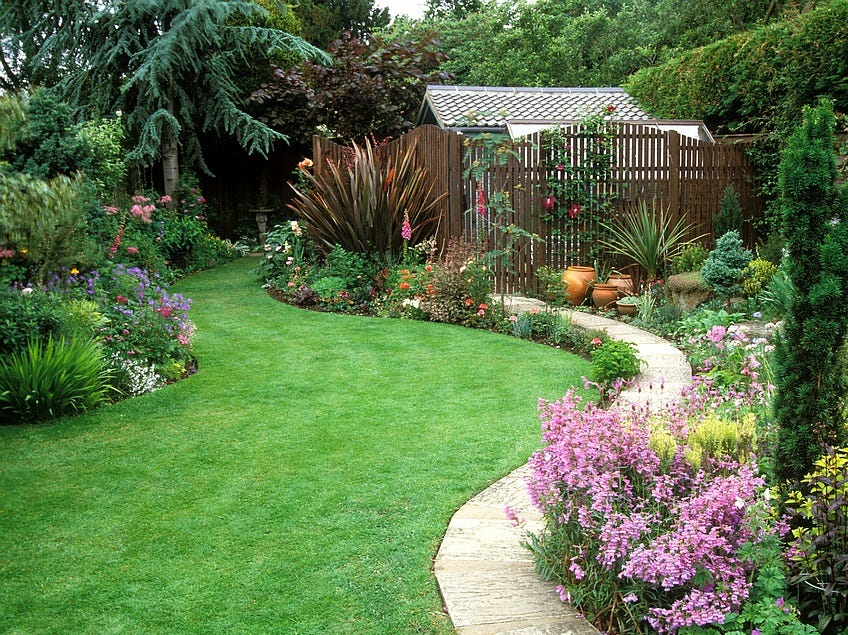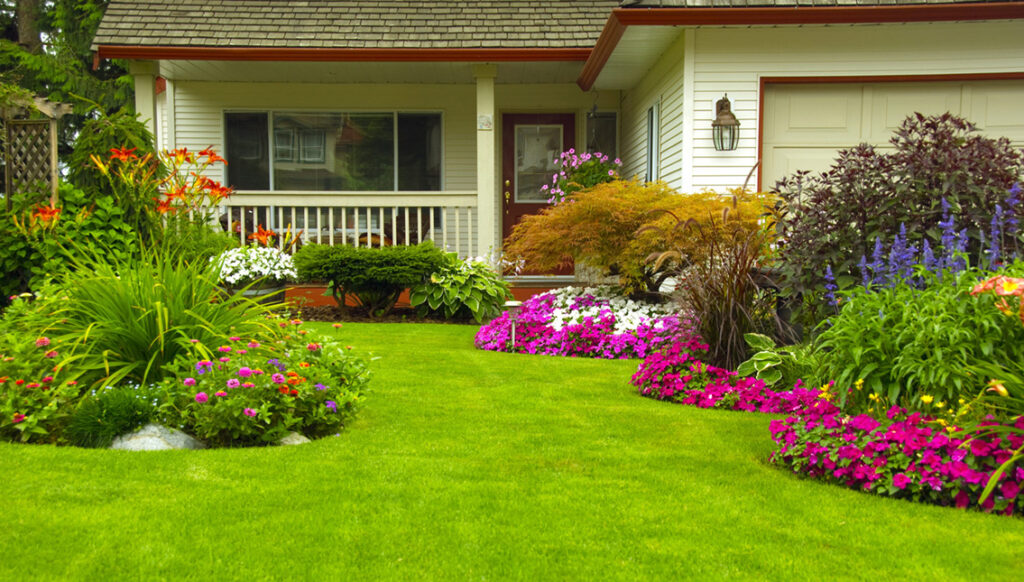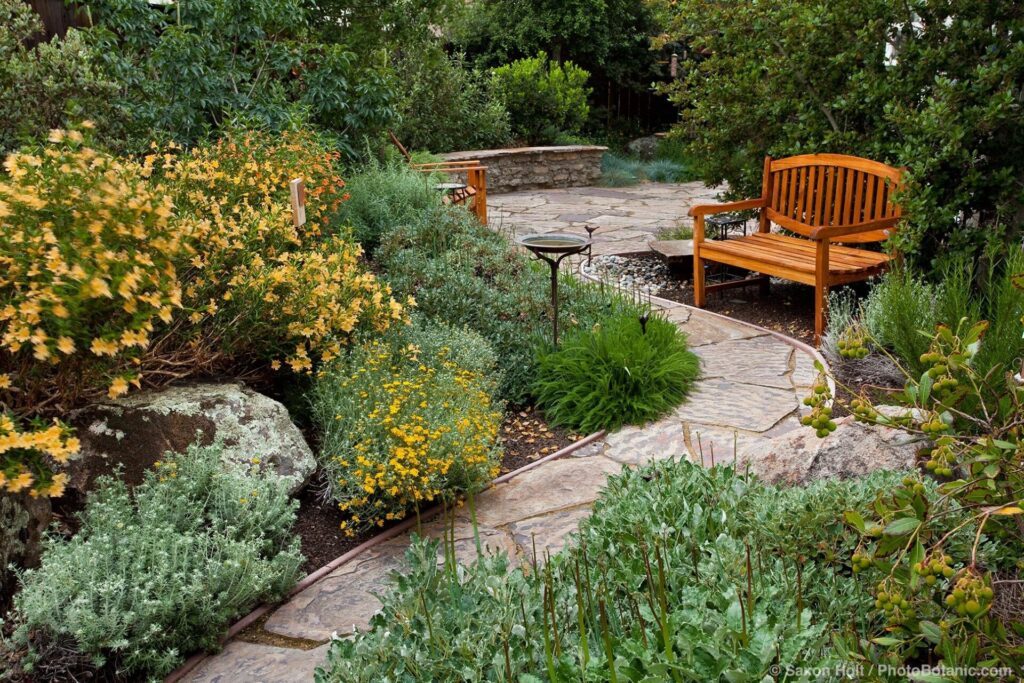When designing your garden, choosing native trees and plants is one of the most effective ways to create a sustainable, eco-friendly landscape. Native plants are adapted to the local climate, soil, and wildlife, which makes them an excellent choice for anyone looking to reduce water usage, maintenance, and the need for chemical fertilizers or pesticides. By using native species, you can create a beautiful and low-maintenance outdoor space that attracts local wildlife, conserves resources, and supports biodiversity. In this blog, we’ll explore some of the best landscape design ideas using native trees and plants for a garden that is not only attractive but also environmentally responsible.


Why Choose Native Trees and Plants for Landscaping?
Before diving into specific landscape design ideas, it’s important to understand why native trees and plants should be your go-to choice for landscaping. Native species offer several benefits:
Low Maintenance: Native plants are well-adapted to local climates, meaning they require less water, fewer fertilizers, and are more resistant to pests and diseases.
Wildlife-Friendly: Native plants provide food and shelter for local birds, insects, and other wildlife, helping to maintain the natural ecosystem.
Water Conservation: Native plants typically need less water once established, which makes them perfect for drought-prone areas.
Support for Biodiversity: By planting native species, you help preserve the genetic diversity of your region’s flora and fauna.
Landscape Design Ideas with Native Trees and Plants
Here are some creative and eco-friendly landscape design ideas using native trees and plants to transform your garden:
1. Create a Native Tree Canopy
One of the most striking features you can include in your landscape design is a canopy of native trees. Trees such as oaks, maples, or pines can provide shade, privacy, and an inviting atmosphere. A well-placed canopy of trees can serve as a focal point in your yard while benefiting the environment by improving air quality and providing habitat for local wildlife.
Design Tip: Space trees thoughtfully to create a natural progression from your front yard to your backyard, allowing sunlight to filter through and create inviting outdoor spaces.
2. Mix Native Plants with Ornamental Grasses
To add texture and interest to your landscape, consider mixing native plants with ornamental grasses like switchgrass or bluestem. These grasses grow well in various conditions and can provide structure and movement to your garden.
Design Tip: Use ornamental grasses as natural borders, pathways, or to soften the edges of your garden. Pair them with native wildflowers such as coneflowers or black-eyed Susans for added color.
3. Incorporate a Native Pollinator Garden
Support local pollinators by creating a native pollinator garden. Native plants like milkweed, purple coneflower, and bee balm provide nectar and habitat for bees, butterflies, and hummingbirds. These plants are not only beautiful but also play a crucial role in maintaining the local ecosystem.
Design Tip: Group native flowering plants together to create a dense, vibrant area that attracts pollinators. A mix of perennial and annual flowers will ensure year-round bloom and a continuous source of food for pollinators.
4. Create a Water-Wise Landscape with Native Plants
Incorporating native plants in your garden can help conserve water, which is essential for sustainable landscaping. Choose drought-tolerant native trees and shrubs like desert willow or manzanita for a xeriscaped garden. These plants are perfect for areas with low rainfall or for homeowners who want to minimize irrigation needs.
Design Tip: Use a mix of native plants that thrive in both wet and dry conditions to create a diverse and resilient landscape. Group plants with similar water needs together to reduce water waste and make watering more efficient.
5. Build a Habitat Garden for Wildlife
If you’re passionate about supporting wildlife, a habitat garden featuring native trees and plants is a great choice. Native shrubs like serviceberry and hazelnut provide food for birds and small mammals, while trees like red maple offer shelter for larger animals.
Design Tip: Create layers in your landscape design with groundcovers, shrubs, and trees to mimic a natural forest environment. This provides diverse habitats for wildlife while adding depth to your garden.
6. Plant a Native Herb Garden
Native herbs such as oregano, sage, and mint can thrive in most climates and add both beauty and functionality to your landscape design. These herbs are not only useful for cooking but also provide fragrance and attract pollinators like bees and butterflies.
Design Tip: Incorporate herbs into your flower beds, or create a dedicated herb garden near your kitchen for easy access when cooking. Use them as edging plants or in raised beds for a more structured design.
7. Add a Native Meadow or Prairie Garden
A native meadow or prairie garden is a beautiful and sustainable way to use native plants in your landscape. These gardens are low-maintenance and provide a natural, wild look. Wildflowers like black-eyed Susans, Indian paintbrush, and purple asters will bloom in a kaleidoscope of colors throughout the growing season.
Design Tip: Allow native grasses to intermingle with wildflowers for a natural, flowing effect. Once established, these gardens require minimal watering and fertilizing.
8. Use Native Vines for Vertical Interest
For small yards or to add vertical interest, native vines like Virginia creeper or honeysuckle are a great option. These plants can climb trellises, fences, or arbors, adding beauty and creating a natural focal point in your landscape design.
Design Tip: Choose vines that are not overly aggressive and can be easily controlled. Plant them along structures such as fences or gates to add greenery and attract pollinators.
Conclusion
Incorporating native trees and plants into your landscape design is a smart choice for both aesthetic and environmental reasons. Native plants are not only beautiful but also low-maintenance, water-efficient, and great for wildlife. Whether you’re creating a tree canopy, pollinator garden, or water-wise landscape, there are endless possibilities for designing a sustainable garden that suits your needs and the local ecosystem. Embrace the beauty and benefits of native landscaping today to enjoy a garden that thrives naturally.



